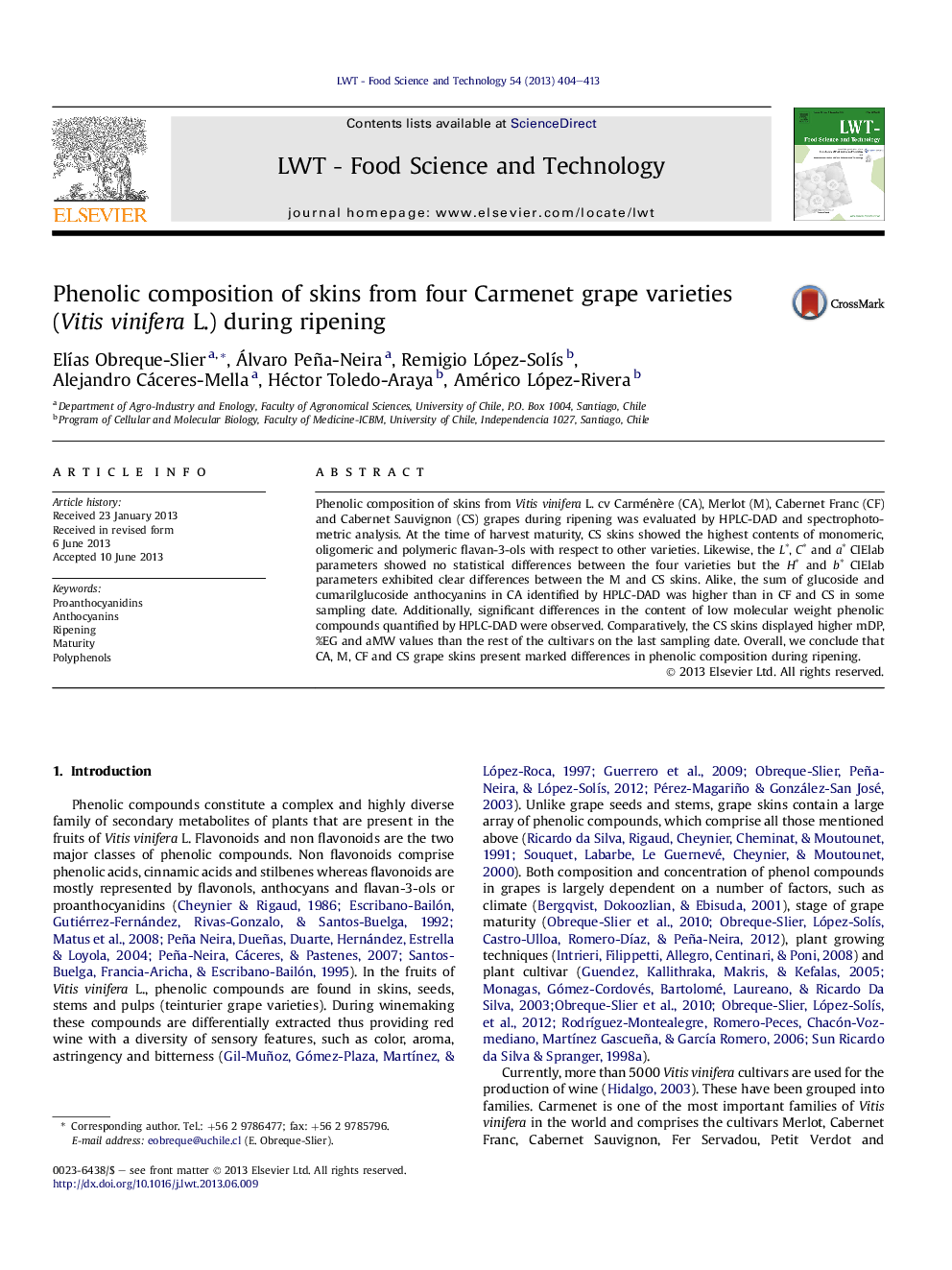| کد مقاله | کد نشریه | سال انتشار | مقاله انگلیسی | نسخه تمام متن |
|---|---|---|---|---|
| 6404579 | 1330906 | 2013 | 10 صفحه PDF | دانلود رایگان |

- Carménère, Merlot, Cabernet Franc and Cabernet Sauvignon skin phenols were evaluated.
- C. Sauvignon showed the highest contents of mono, oligo and polymeric flavan-3-ols.
- Carménère presented highest glucoside and cumarilglucoside anthocyanins.
- C. Sauvignon skins displayed highest mDP, %EG and aMW values.
- Grapes skins of these cultivars present differences in phenolic composition.
Phenolic composition of skins from Vitis vinifera L. cv Carménère (CA), Merlot (M), Cabernet Franc (CF) and Cabernet Sauvignon (CS) grapes during ripening was evaluated by HPLC-DAD and spectrophotometric analysis. At the time of harvest maturity, CS skins showed the highest contents of monomeric, oligomeric and polymeric flavan-3-ols with respect to other varieties. Likewise, the Lâ, Câ and aâ CIElab parameters showed no statistical differences between the four varieties but the Hâ and bâ CIElab parameters exhibited clear differences between the M and CS skins. Alike, the sum of glucoside and cumarilglucoside anthocyanins in CA identified by HPLC-DAD was higher than in CF and CS in some sampling date. Additionally, significant differences in the content of low molecular weight phenolic compounds quantified by HPLC-DAD were observed. Comparatively, the CS skins displayed higher mDP, %EG and aMW values than the rest of the cultivars on the last sampling date. Overall, we conclude that CA, M, CF and CS grape skins present marked differences in phenolic composition during ripening.
Journal: LWT - Food Science and Technology - Volume 54, Issue 2, December 2013, Pages 404-413